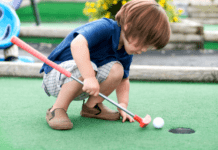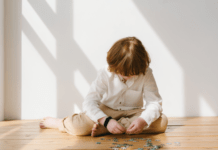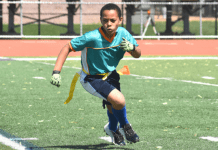 Mindfulness is a valuable skill to nurture in our children.
Mindfulness is a valuable skill to nurture in our children.
Developing mindfulness can help our children to better identify, express, regulate, and tolerate their emotions. Another fantastic benefit we get from sharing mindfulness with our children is that we are exposed to it as well. Mindfulness promotes stress relief and emotional regulation and also encourages our children to be empowered and eventually independent. Being able to identify, share, and deal with difficult feelings, without throwing a temper tantrum, is a skill that many adults haven’t mastered. But what is mindfulness? Here’s how we can introduce the concept to our children in fun and interactive activities.
What is Mindfulness?
Mindfulness is the ability to be more aware of (and hypothetically in control of) the emotions and thoughts that we experience. We can’t completely control the events or triggers that happen in our lives, but we can control how we respond to them. This is a powerful lesson for our children, teaching them empowerment and accountability for their state of mind.
Mindfulness skills can be incredibly powerful to all ages, but are especially helpful to young children who don’t control very much in their lives and may struggle with impulse control and/or the ability to identify and articulate what they are feeling and experiencing. Instilling these skills and behaviors in our children from a young age helps ensure that they have the tools to maintain their wellness throughout their entire lives.
Mindful Unicorns
So, how do we teach our kids, even toddlers (who are arguably one of the most emotionally unstable populations), to be mindful? A mindful three year old may be almost as elusive as a unicorn.
First, we can help to teach them to name what they are experiencing. Naming their emotions gives them the power to better comprehend and express to you what they are going through. Help them to identify thought patterns and physical sensations that they might associate with basic emotions. Children are often incredibly attuned to what they are experiencing physically, sometimes more so than their adult counterparts, and teaching them (for example) that somatic sensations such as butterflies in their tummy may indicate excitement is a great way to help them verbalize and process emotion.
Coping Skills
We can also begin to introduce our children to coping skills. Coping skills are any activity that helps us to manage difficult feelings, or improve distress tolerance. These skills do not eliminate discomfort, they simply enhance our ability tolerate it. They can be fun, interactive, and should be unique to every child. Sometimes it takes some experimentation to find skills that are effective and practical for our kids. These skills will grow and change as our children develop.
 An Example of Mindfulness
An Example of Mindfulness
My three year old’s current favorite coping skills are roaring like a dinosaur and taking a “lap” around our kitchen. He’s also getting much better at identifying his emotions when he starts to get upset and his vocabulary of emotions has really surprised me. Emotion identification has taken lots and lots of repetition and modeling!
When he uses his coping skills, or tells me he’s feeling frustrated, it’s thrilling to see the benefit of introducing him to mindfulness and emotional empowerment at a young age. I would estimate that he uses his skills “successfully” (i.e., avoiding meltdown) about half of the time. The other times, he may begin to share what he’s experiencing but not be able to manage the intensity of his feelings or he may throw a stuffed animal at my face and yell “No, mommy”! If (let’s be honest, when) I see metaphorical stuffed animals flying towards me, I simply do my best to make a mindful choice to respond in a way that models the type of behavior I’m trying to instill in him. I would say my success rate is in the 70% range.
Bottom line
As with anything , introducing mindfulness (in our lives or our children’s) will not manifest overnight. It is a journey that you and your child can embark upon together. More important than teaching our children to be mindful, seek to embody mindfulness in your own life. Our children are always watching and learn from us. Modeling mindfulness through emotional identification, regulation, and distress tolerance is not only a powerful mechanism for teaching our children, but also for enriching our own health.

















